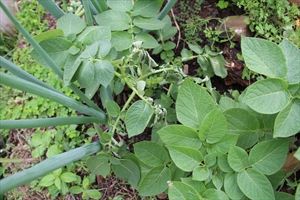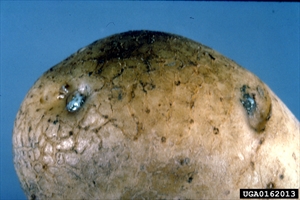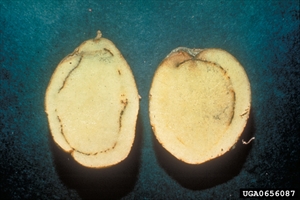Ralstonia solanacearum Race 3 biovar 2. Other names are: Bacillus solanacearum, Burkholderia solanacearum, and Pseudomonas solanacearum. There are five races of Ralstonia solanacearum: Race 1 has a host range of over 50 plant families (200 plant species), including chilli, capsicum, peanut, and Solanum species (but more rarely on potato); race 2 mostly affects banana and Heliconia, Race 4, ginger, and Race 5, mulberry.
Under a revised classification system (2005), and based on DNA sequencing, Ralstonia solanacearum has been divided into four groups, reflecting geography (phylotypes), and further by genetic sequence of an important gene (sequevars). By this method potato brown rot is Phylotype II, sequevars 1&2.









